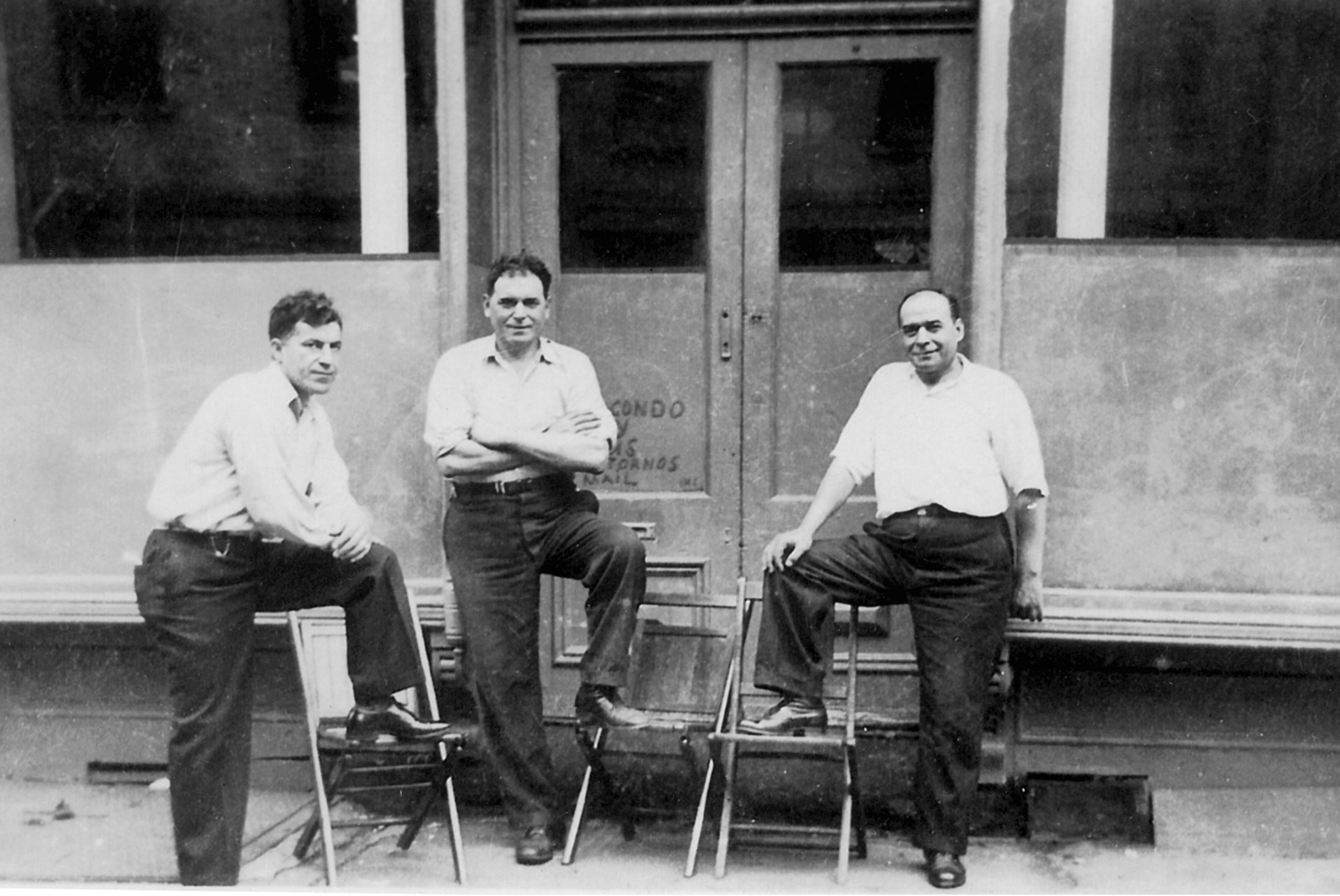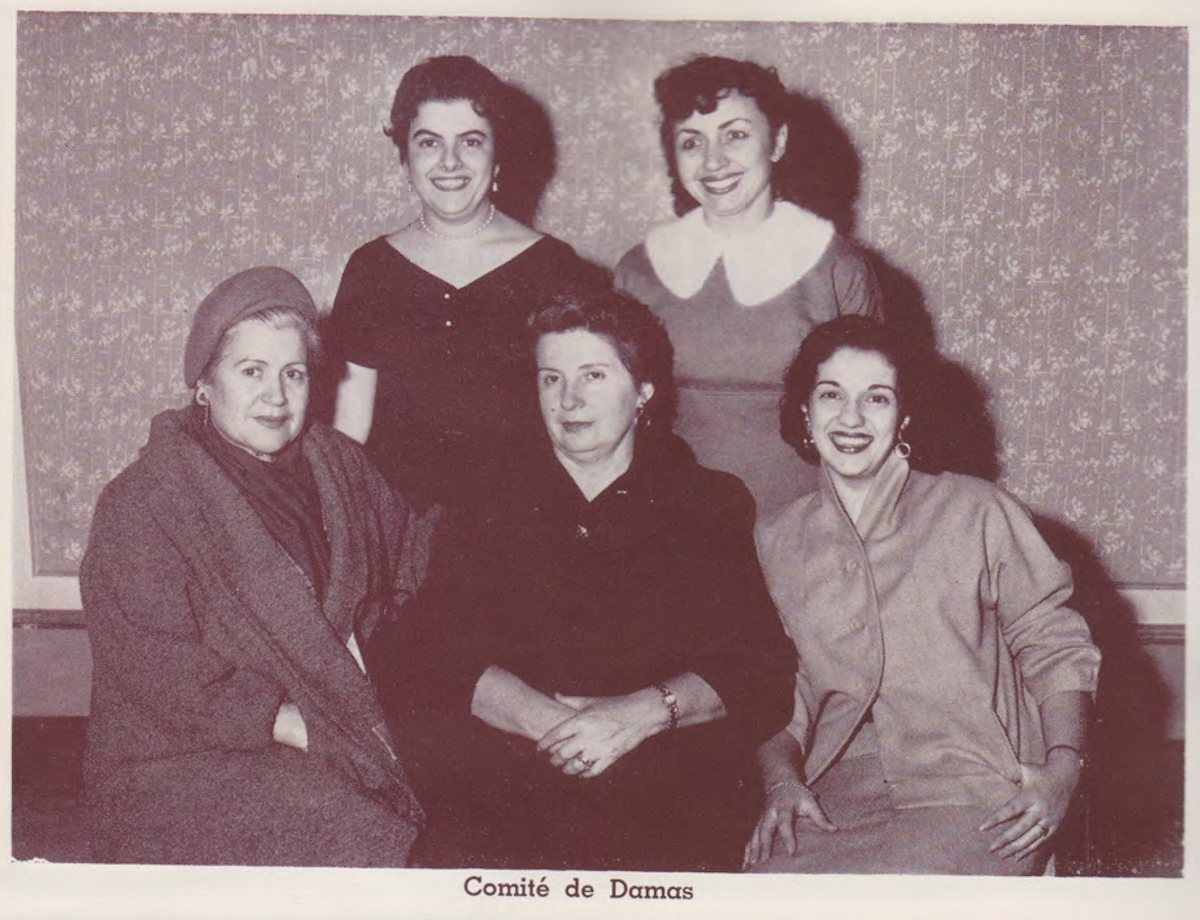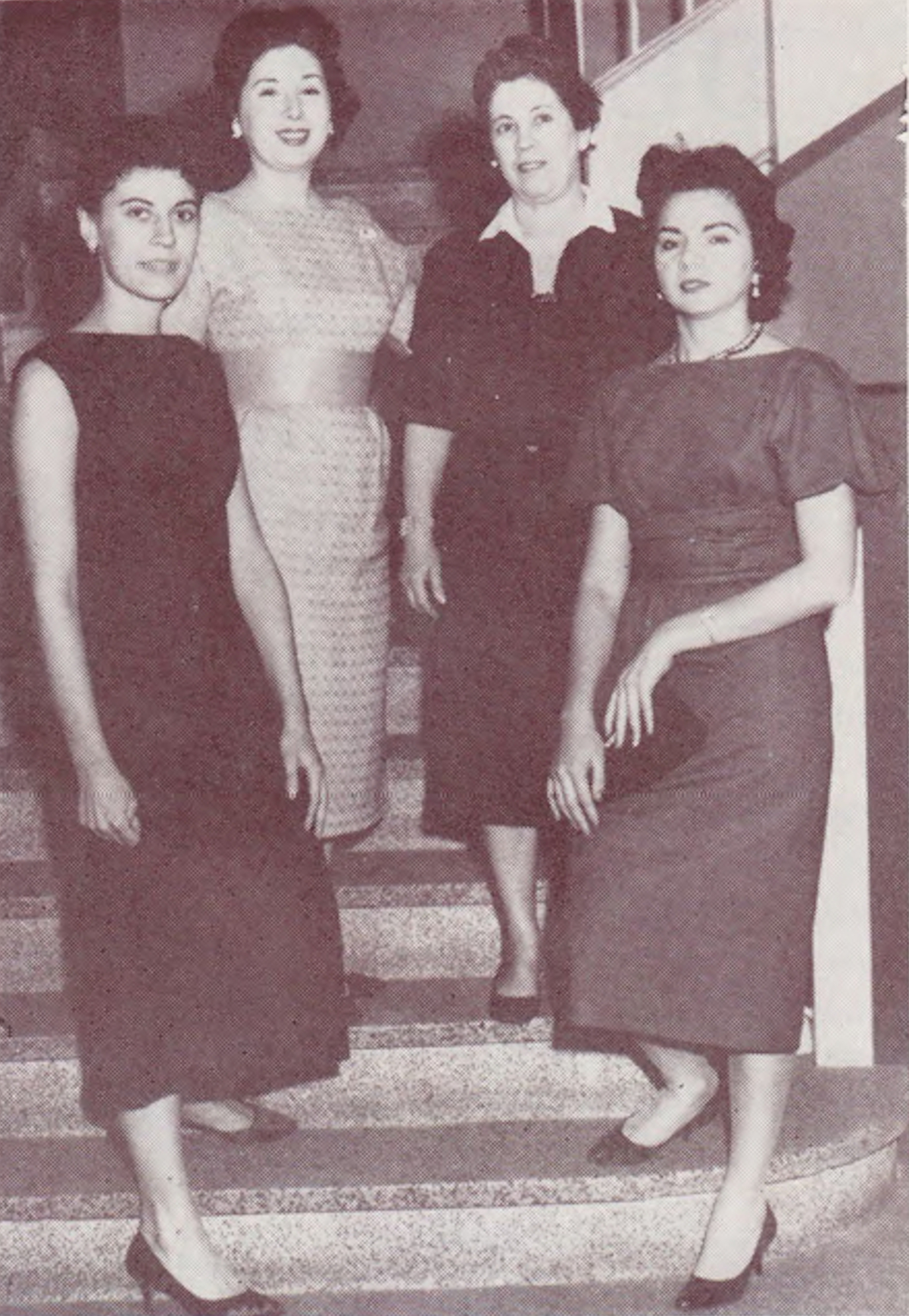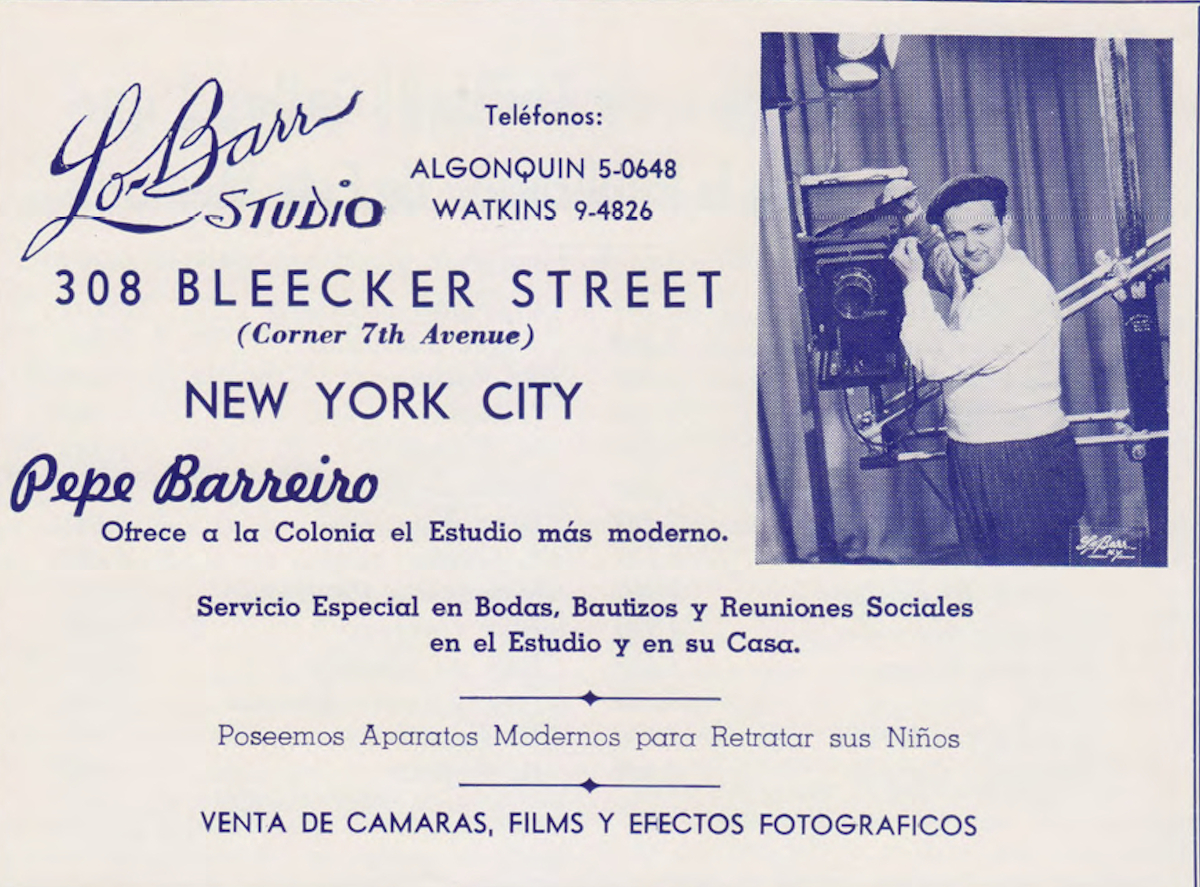
(Explore the map to see the presence of Galicians in New York & New Jersey, and traces of these two locations in Galicia. Click on the red dots to know more)
Although in absolute terms Galician migration to the United States has been quantitatively lower than to Latin America countries (for example 3.75% of all migrants to America from 1921 to 1930, according to historian Bieito Alonso), the New York area has been a relevant destination for certain Galician towns, especially those located on the coast.
Several academic studies carried out since the early 2000s by researchers such as Nancy Pérez Rey, Carmen García-Rodeja and Ana Varela-Lago, indicate that from 1917 to 1941, New York was the main migratory destination for the towns of Bueu, Boiro, Ribeira, Muros, Carnota, Bergondo, Sada and Oleiros. García-Rodeja and Pérez Rey point out that the percentage of migrants in New York from the Mariña area (on Lugo’s coast) during this period was 36%, compared to destinations such as Buenos Aires (23%) and Havana (17,1%), which were usually more common across Galicia. According to their study, 84% of the migrants from Sada were also living in New York in 1935.
The data gathered in the study of Spanish migration to the United States by Germán Rueda confirms the relevance of the Galician diaspora in the New York area. Rueda’s work indicates that people from Galicia made up the majority of Spaniards registered at the Consulates in 1933 and 1934. From 1933 to 1935, 50% of the 12,000 Spaniards registered in New York were also Galician. The exile Emilio González López goes further and suggests that, in the thirties, 90% of the 15,000 Spaniards who lived in the city were originally from Galicia. This seems to be González López’s own estimate, but we must also take into account the number of migrants arriving in the city illegally, especially sailors, even after the National Origins Quota Act was passed in 1921.
Outside of New York, Galicians were also present in other parts of the United States. In a 2008 study, Ana Varela-Lago states that “New York was the center of a network of Spanish colonies […] that stretched across several states on the east coast of the country, such as New Jersey, Pennsylvania, Ohio, Vermont and West Virginia, where Galicians, Asturians and Andalusians predominated”. The city of Newark in the state of New Jersey, located in front of New York, received a significant number of Galicians, especially from Ourense. According to Miguel Anxo Murado, the city was popularly known among Galician residents as “Nuarca” (in a Galicianised pronunciation). The documentary film The 15000 of Newark (2007) by Anxo Fernández collects a large number of testimonies of migrants and descendants of Galicians who live today in this area, as well as in the town of Harrison. In the area known as “Ironbound” there are still shops and restaurants with a Galician accent.
These data indicate that, quantitatively, the Galician presence in New York and New Jersey has played a relevant role in the history of Galician and Spanish migration to this part of the world, as well as in the places of origin of the migrants. A notable aspect of the Galician community in the New York was the number of businesses that have been part of the map of the city since the early twentieth century, especially in the area known as “Little Spain” on 14th Street, but also in other areas, mainly in Manhattan. “La Coruña Bar”, “El Faro Bar-Restaurant”, “Café Chantada”, “Restaurant-Bar Central Galicia”, “Café Finisterre”, “Monte Tecla Bar-Restaurant”, “Restaurant Port Vigo”, and even others without references to Galicia in their name such as the restaurant “Ebro” or the clothing store “La Iberia”, are some examples of businesses run by Galicians in the city. The map on top of this page pinpoints the locations of many of these establishments as well as other relevant places of Galician migration in New York, New Jersey and its starting point in Galicia.
The clubs and societies created by the migrants also played an important role, especially those defined by the historian Xosé Manoel Núñez Seixas as “micro-territorial” societies. As was the case in Latin America, the migrants created societies aimed at improving the lives of their places of origin. They were often set up to finance the construction of a school or a social center in Galicia, as was the case with the societies “Bergondo y sus contornos”, “Sada y sus contornos”, “Unión Cultural de Bueu, Beluso y sus contornos” and “Unión del Porvenir de Taborda y Piñeiro”. At the same time, in New York and New Jersey, these were spaces for socialization, where the migrants practiced and celebrated their culture with meals and balls (often to raise funds) and as a meeting place. The achievements of these societies, the buildings that still stand thanks to the efforts of migrants and also of the societies that were created with the same name in the places of origin, constitute an important social and cultural legacy that, after being in many cases expropriated by the Franco dictatorship, was recovered in more recent times. In this sense, buildings, monuments and commemorative plaques can be considered a link, both physical and cultural, between the two points on the map: Galicia and New York.
Today, it is estimated that Galicians still have a relevant presence in the New York and New Jersey area. In 2015, the newspaper España Exterior. The newspaper of the Spanish communities in the world, stated that there were 17,600 Galicians living in the United States. In an article from the same year, Miguel Anxo Santos Rego suggested a larger number and argued that the total number of Galicians living in this country was not less than forty thousand. In New York, the “Casa Galicia Unity Gallega” (founded in 1940 on Castelao’s suggestion) continues to be the epicenter of the Galician community, now based mainly in Astoria. In New Jersey, Galician migration is still significant, especially in the cities of Newark and Harrison, where Galicians and their descendants meet in societies such as the “Centro Orensano”.
The photo galleries below reconstruct this experience through images: the departure, some examples of Galicians in New York, their societies and businesses, and the presence of New York in Galicia.
PHOTO GALLERIES
Bibliography
Alonso, Bieto. Obreiros alén mar. Mariñeiros, fogoneiros e anarquistas galegos en New York (Santo Tirso: A Nosa Terra, 2006).
Fuentes, Víctor. “Arredor da narrativa galega no exilio”, Grial 145: 71-87.
___ . ‘Vigencia y exaltación de Rosalía de Castro en los escritores gallegos del exilio’, in Helena González e María Xesús Lama (eds.), Actas do VII Congreso Internacional de Estudos Galegos. Mulleres en Galicia. Galicia e os outros pobos da Península (Sada: Ediciós do Castro, 2007), pp. 117-124.
García-Rodeja, Carmen e Pérez Rey, Nancy. ‘Mulleres galegas na emigración: das Mariñas a Nova York’, in Helena González and María Xesús Lama (eds.), Actas do VII Congreso Internacional de Estudos Galegos. Mulleres en Galicia. Galicia e os outros pobos da Península (Sada: Ediciós do Castro, 2007), pp. 425-435.
González López, Emilio (coa colaboración de Amado Ricón). Castelao, propagandista da República en Norteamérica (Sada: Ediciós do Castro, 2000).
Jorge Pereiro, Natalia. ‘As escolas indianas en Tomiño’, Pontenova, Revista de Novos Historiadores 10: 107–116.
Méndez, Manuel. ‘O Grove revive su historia en “A Catorse”’, Faro de Vigo, 16/12/2017, <https://www.farodevigo.es/portada-arousa/2017/12/16/o-grove-revive-historia-catorse/1804886.html> (accessed 11/7/2018).
Murado, Miguel-Anxo. Otra idea de Galicia (Barcelona: Debate, 2018).
Núñez Seixas, Xosé Manouel. O soño da Galiza Ideal. Estudos sobre exiliados e emigrantes galegos (Vigo: Galaxia. 2016).
Pérez Rey, Nancy. ‘Panorama do exilio galego en Nova York’, in Actas do Congreso Internacional “O exilio galego” (Compostela: Consello da Cultura Galega, 2001), pp. 600-614.
___ . ‘Unha achega á emigración galega a Nova York’, Estudos Migratorios 1(2): 31-61.
Rueda, Germán. La emigración contemporánea de españoles a Estados Unidos 1820-1950. De “Dons” a “Misters” (Madrid: MAPFRE, 1993).
__ . ‘Asociaciones y otras formas de relación de los españoles en Norteamérica’, in Juan Andrés Blanco Rodríguez (ed.), El asociacionismo en la emigración española a América (Salamanca: Uned Zamora & Junta de Castilla y León, 2018), pp. 235–76.
‘Rueda y Miranda visitan a la comunidad gallega en Newark y participan en el 75 aniversario de la Casa de Galicia de Nueva York’, España Exterior. El periódico de las comunidades españolas en el mundo, 25/9/2015, <http://www.espanaexterior.com/noticias/rueda-y-miranda-visitan-a-la-comunidad-gallega-en-newark-y-participan-en-el-75-aniversario-de-la-casa-de-galicia-de-nueva-york-2/> (accessed 11/7/2018).
Santos Rego, Miguel Anxo. ‘A comunidade galega en USA. Unha ruta de aculturación en perspectiva’, in Alberto Pena, Mário Mesquita e Paula Vicente (eds.), Emigración e exilio nos Estados Unidos de América: experiencias de Galicia e Azores (Santiago de Compostela: Consello da Cultura Galega, 2015), pp. 83–94.
Varela-Lago, Ana. “A emigración galega aos Estados Unidos: galegos en Luisiana, Florida e Nova York (1870-1940)”, Estudos Migratorios 1(2): 63-84.
Vilar Álvarez, Manuel. ‘”Vin porque me trouxeron, non quería vir”. De Carnota a Astoria. A emigración de Carnota na cidade de Nova York’, Estudos Migratorios 2(2): 69-90.



















































































